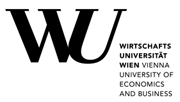Department of Economics Working Papers,
Vienna University of Economics and Business, Department of Economics
No 226: Integration and Efficiency of European Electricity Markets: Evidence from Spot Prices
Klaus Gugler (), Adhurim Haxhimusa () and Mario Liebensteiner ()
Additional contact information
Klaus Gugler: Department of Economics, Vienna University of Economics and Business
Adhurim Haxhimusa: Research Institute for Regulatory Economics, Vienna University of Economics and Business
Mario Liebensteiner: Department of Economics, Vienna University of Economics and Business
Abstract: This paper seeks to investigate the current state of market integration among European electricity day-ahead spot prices. We provide reasoning that market integration brings about benefits, such as lower average prices and increased welfare from allocative efficiency. Yet, price convergence leads to higher prices in the low-price market and to lower prices in the high-price market, which creates winners and losers and thus makes the political implementation of market integration cumbersome. In our empirical analysis, we utilize a large sample of hourly spot prices of 25 European markets for the period 01.01.2010–30.06.2015 and combine it with other relevant data such as interconnector capacities and the existence of market coupling. Firstly, empirical results from cointegration analysis indicate that market integration increased from 2010 to 2012 but then declined until 2015, most likely due to increased feed-in from intermittent renewables. Secondly, we empirically assess the speed of adjustment from price shocks and reach the conclusion that the resulting efficiency of integration is rather modest. In general, our findings suggest that integration among European electricity markets has a large potential for improvements from additional capacity investments and further promotion of market coupling.
Keywords: Market integration, Spot Price, Convergence, Internal Market, Electricity
JEL-codes: F15; L81; L98; Q48 June 2016
Note: PDF Document
Full text files
wp226.pdf
Report problems with accessing this service to Sune Karlsson ().
RePEc:wiw:wiwwuw:wuwp226This page generated on 2025-09-20 04:36:36.

